國際標(biāo)準(zhǔn)簡稱:J ASIAN ARCHIT BUILD
人氣 2036
《Journal Of Asian Architecture And Building Engineering》是一本專注于ARCHITECTURE領(lǐng)域的English學(xué)術(shù)期刊,創(chuàng)刊于2002年,由Taylor and Francis Ltd.出版商出版,出版周期Semiannual。該刊發(fā)文范圍涵蓋ARCHITECTURE等領(lǐng)域,旨在及時、準(zhǔn)確、全面地報(bào)道國內(nèi)外ARCHITECTURE工作者在該領(lǐng)域的科學(xué)研究等工作中取得的經(jīng)驗(yàn)、科研成果、技術(shù)革新、學(xué)術(shù)動態(tài)等。該刊已被SCIE數(shù)據(jù)庫收錄,在中科院最新升級版分區(qū)表中,該刊分區(qū)信息為大類學(xué)科工程技術(shù)4區(qū),2023年影響因子為1.5。
Journal of Asian Architecture and Building Engineering is a refereed international Open Access journal, serving researchers in academic and research organizations and all practitioners in the building sector. The journal is jointly-edited by the Architectural Institute of Japan (AIJ), the Architectural Institute of Korea (AIK), and the Architectural Society of China (ASC) and published bi-monthly.
Asian academics and professionals have made efforts to find solutions to the themes derived from natural, geographical, socio-economical and cultural conditions in Asia. Their achievements have contributed to the evolution of research in the field of architecture and building engineering. For instance, achievements in structural engineering have contributed to the world by developing technology to assure safety of buildings in earthquake-prone areas.
Asia has the largest share of the world's population with high densities in urban areas. It is a growing and the most energetic region in terms of building activities, which produces valuable empirical knowledge and lessons to architects and building engineers in Asia. It is quite significant to contribute to global architecture and building engineering by presenting the knowledge and lessons beyond linguistic barriers.
By publishing the journal in English, it is expected that Asian wisdom and experience will be disseminated to the world. In the countries where these institutions are based, building professions can enjoy the collaborative and holistic approach because the three institutions distinctively possess the whole range of expertise relating to architecture and building engineering.
| 大類學(xué)科 | 分區(qū) | 小類學(xué)科 | 分區(qū) | Top期刊 | 綜述期刊 |
| 工程技術(shù) | 4區(qū) | ARCHITECTURE 建筑學(xué) CONSTRUCTION & BUILDING TECHNOLOGY 結(jié)構(gòu)與建筑技術(shù) | 3區(qū) 4區(qū) | 否 | 否 |
| 大類學(xué)科 | 分區(qū) | 小類學(xué)科 | 分區(qū) | Top期刊 | 綜述期刊 |
| 工程技術(shù) | 4區(qū) | CONSTRUCTION & BUILDING TECHNOLOGY 結(jié)構(gòu)與建筑技術(shù) | 4區(qū) | 否 | 否 |
| 大類學(xué)科 | 分區(qū) | 小類學(xué)科 | 分區(qū) | Top期刊 | 綜述期刊 |
| 工程技術(shù) | 4區(qū) | CONSTRUCTION & BUILDING TECHNOLOGY 結(jié)構(gòu)與建筑技術(shù) | 4區(qū) | 否 | 否 |
| 大類學(xué)科 | 分區(qū) | 小類學(xué)科 | 分區(qū) | Top期刊 | 綜述期刊 |
| 工程技術(shù) | 4區(qū) | CONSTRUCTION & BUILDING TECHNOLOGY 結(jié)構(gòu)與建筑技術(shù) | 4區(qū) | 否 | 否 |
| 大類學(xué)科 | 分區(qū) | 小類學(xué)科 | 分區(qū) | Top期刊 | 綜述期刊 |
| 工程技術(shù) | 4區(qū) | CONSTRUCTION & BUILDING TECHNOLOGY 結(jié)構(gòu)與建筑技術(shù) | 4區(qū) | 否 | 否 |
| 大類學(xué)科 | 分區(qū) | 小類學(xué)科 | 分區(qū) | Top期刊 | 綜述期刊 |
| 工程技術(shù) | 4區(qū) | CONSTRUCTION & BUILDING TECHNOLOGY 結(jié)構(gòu)與建筑技術(shù) | 4區(qū) | 否 | 否 |
中科院分區(qū):中科院分區(qū)是SCI期刊分區(qū)的一種,是由中國科學(xué)院國家科學(xué)圖書館制定出來的分區(qū)。主要有兩個版本,即基礎(chǔ)版和升級版。2019年中國科學(xué)院文獻(xiàn)情報(bào)中心期刊分區(qū)表推出了升級版,實(shí)現(xiàn)了基礎(chǔ)版和升級版的并存過渡;升級版是對基礎(chǔ)版的延續(xù)和改進(jìn),將期刊由基礎(chǔ)版的13個學(xué)科擴(kuò)展至18個,科研評價(jià)將更加明確。
| 按JIF指標(biāo)學(xué)科分區(qū) | 收錄子集 | 分區(qū) | 排名 | 百分位 |
| 學(xué)科:ARCHITECTURE | AHCI | N/A | N / A |
0%
|
| 學(xué)科:CONSTRUCTION & BUILDING TECHNOLOGY | SCIE | Q3 | 54 / 91 |
41.2%
|
| 按JCI指標(biāo)學(xué)科分區(qū) | 收錄子集 | 分區(qū) | 排名 | 百分位 |
| 學(xué)科:ARCHITECTURE | AHCI | Q1 | 13 / 97 |
87.11%
|
| 學(xué)科:CONSTRUCTION & BUILDING TECHNOLOGY | SCIE | Q1 | 11 / 91 |
88.46%
|
JCR分區(qū):JCR(Journal Citation Reports)由科睿唯安公司(前身為湯森路透)開發(fā)。JCR沒有設(shè)置大類,只將期刊分為176個具體學(xué)科,也就是中科院分區(qū)中的小類學(xué)科。基于不同學(xué)科的當(dāng)年影響因子高低進(jìn)行排序,將期刊的數(shù)量均勻分為四個部分,Q1區(qū)代表學(xué)科分類中影響因子排名前25%的期刊,以此類推,Q2區(qū)為前25%-50%期刊,Q3區(qū)為前50%-75%期刊,Q4區(qū)為75%以后期刊。
CiteScore排名:
| 學(xué)科類別 | 分區(qū) | 排名 | 百分位 |
| 大類:Social Sciences 小類:Cultural Studies | Q1 | 147 / 1304 |
88%
|
| 大類:Social Sciences 小類:Architecture | Q1 | 42 / 189 |
78%
|
| 大類:Social Sciences 小類:Arts and Humanities (miscellaneous) | Q2 | 156 / 552 |
71%
|
| 大類:Social Sciences 小類:Building and Construction | Q3 | 121 / 223 |
45%
|
| 大類:Social Sciences 小類:Civil and Structural Engineering | Q3 | 230 / 379 |
39%
|
CiteScore值計(jì)算方式:例如2024公布的CiteScore是將統(tǒng)計(jì)在 2020年-2023年間年所發(fā)表文章的引用次數(shù)除以在 2020年-2023年間所發(fā)表的發(fā)文總數(shù)。
CiteScore數(shù)據(jù)來源:是由全球著名學(xué)術(shù)出版商Elsevier(愛思唯爾)基于其Scopus數(shù)據(jù)庫推出的期刊評價(jià)指標(biāo)。CiteScore指數(shù)以四年區(qū)間為基準(zhǔn)來計(jì)算每本期刊的平均被引用次數(shù),并提供期刊領(lǐng)域排名、期刊分區(qū)的相關(guān)信息,它的作用是測量期刊的篇均影響力。
近年中科院分區(qū)趨勢圖
近年IF值(影響因子)趨勢圖
影響因子:是美國科學(xué)信息研究所(ISI)的期刊引證報(bào)告(JCR)中的一項(xiàng)數(shù)據(jù)。指的是某一期刊的文章在特定年份或時期被引用的頻率,是衡量學(xué)術(shù)期刊影響力的一個重要指標(biāo)。自1975年以來,每年定期發(fā)布于“期刊引證報(bào)告”(JCR)。
| 機(jī)構(gòu)名稱 | 發(fā)文量 |
| KYUNG HEE UNIVERSITY | 15 |
| HANYANG UNIVERSITY | 12 |
| INHA UNIVERSITY | 8 |
| UNIVERSITY OF TOKYO | 8 |
| YONSEI UNIVERSITY | 8 |
| CHUNGBUK NATIONAL UNIVERSITY | 7 |
| SEOUL NATIONAL UNIVERSITY (S... | 7 |
| SOUTHEAST UNIVERSITY - CHINA | 7 |
| TONGJI UNIVERSITY | 7 |
| DANKOOK UNIVERSITY | 6 |
| 國家/地區(qū) | 發(fā)文量 |
| South Korea | 106 |
| CHINA MAINLAND | 86 |
| Japan | 42 |
| Taiwan | 12 |
| USA | 11 |
| Iran | 4 |
| England | 3 |
| Indonesia | 3 |
| Turkey | 3 |
| Australia | 2 |
| 文章引用名稱 | 引用次數(shù) |
| Future changes to smart home... | 5 |
| The Effects of Human Behavio... | 4 |
| Flexural behavior of concret... | 4 |
| Analysis of plant constructi... | 3 |
| Development of a Maintenance... | 3 |
| Identifying spatial meanings... | 3 |
| A quantitative risk assessme... | 3 |
| Group Decision-Making and a ... | 3 |
| Research on the correlation ... | 2 |
| Comparative Analysis of Mult... | 2 |
| 被引用期刊名稱 | 數(shù)量 |
| SUSTAINABILITY-BASEL | 26 |
| J ASIAN ARCHIT BUILD | 15 |
| BUILD ENVIRON | 14 |
| ADV CIV ENG | 11 |
| AUTOMAT CONSTR | 11 |
| ENERG BUILDINGS | 7 |
| J CLEAN PROD | 7 |
| STRUCT DES TALL SPEC | 7 |
| APPL SCI-BASEL | 6 |
| CONSTR BUILD MATER | 6 |
| 引用期刊名稱 | 數(shù)量 |
| J ASIAN ARCHIT BUILD | 15 |
| CONSTR BUILD MATER | 13 |
| BUILD ENVIRON | 12 |
| CEMENT CONCRETE RES | 9 |
| ENERG BUILDINGS | 6 |
| RENEW SUST ENERG REV | 6 |
| EARTHQ STRUCT | 4 |
| J CONSTR ENG M | 4 |
| J STRUCT ENG | 4 |
| SOL ENERGY | 4 |
1、建議稿件控制10頁以上,文章撰寫語言為英語;(單欄格式,單倍行距,內(nèi)容10號字體,文稿類型包含:原創(chuàng)研究(Original Research)、案例報(bào)告(Case Report)、文獻(xiàn)綜述(Literature Review)等;文件格式包含word、PDF、LaTeX等。
2、稿件重復(fù)率控制10%以內(nèi),論文務(wù)必保證原創(chuàng)性、圖標(biāo)、公式、引文等要素齊備,保證附屬資料的完整。已發(fā)表或引用過度的文章將不會被出版和檢索,禁止一稿多投,拒絕抄襲、機(jī)械性的稿件。
3、稿件必須有較好的英語表達(dá)水平,有圖,有表,有公式,有數(shù)據(jù)或設(shè)計(jì),有算法(方案,模型),實(shí)驗(yàn),仿真等;參考文獻(xiàn)控制25條以上,參考文獻(xiàn)引用一半以上控制在近5年以內(nèi)。
圖片和圖表要求:1、建議使用TIFF、EPS、JPEG格式 ,TIFF格式 使用LZW壓縮。
2、文件大小最大不超過20MB,不要以單個文件的形式上傳數(shù)據(jù)。
3、彩色圖片的分辨率≥300dpi;黑白圖片的分辨率在≥500dpi;line art圖片類型的分辨率≥1000dpi;色彩模式建議采用RGB,除非期刊注明要CMYK。
4、線條不要細(xì)于0.25pt,也不能太粗,超過1.5pt,過細(xì)或過粗都影響美觀。
5、表格一般和manuscrript放置在一個word文檔里部分期刊 需要單獨(dú)上傳表格。
作者信息:1、包括作者姓名、最高學(xué)位,作者單位(精確到部門),郵箱,地址,郵編,關(guān)鍵詞,內(nèi)容,總結(jié),項(xiàng)目基金,參考文獻(xiàn),作者相片+簡介(一定要確保作者信息準(zhǔn)確無誤,提交稿件之后這部分不能再作改動)。
更多征稿細(xì)則請查閱雜志社征稿要求。本站專注期刊咨詢服務(wù)十年,確保SCI檢索,稿件信息安全保密,合乎學(xué)術(shù)規(guī)范不成功不收費(fèi),詳情請咨詢客服。
ARCHITECTURAL INST JAPAN, 5-26-20 SHIBA, MINATO-KU, TOKYO, JAPAN, 108-8414
若用戶需要出版服務(wù),請聯(lián)系出版商:ARCHITECTURAL INST JAPAN, 5-26-20 SHIBA, MINATO-KU, TOKYO, JAPAN, 108-8414。
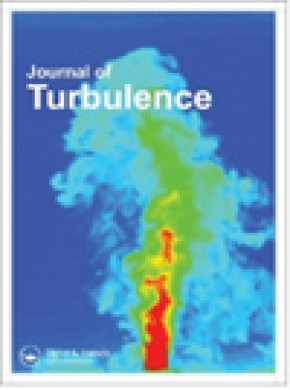
中科院分區(qū) 4區(qū)
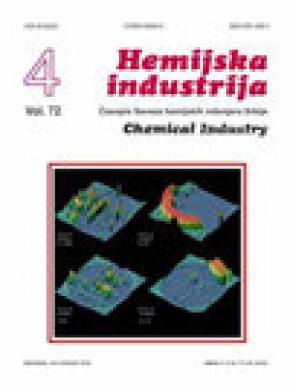
中科院分區(qū) 4區(qū)
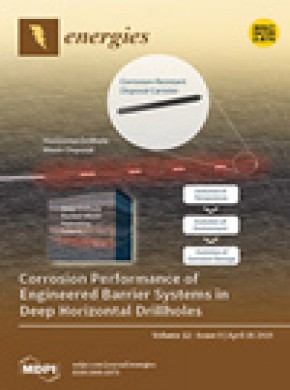
中科院分區(qū) 4區(qū)
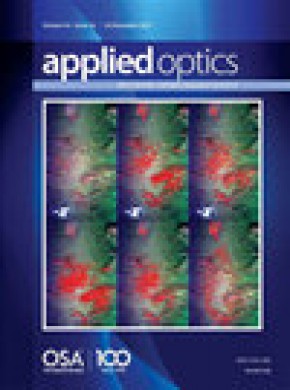
中科院分區(qū) 4區(qū)
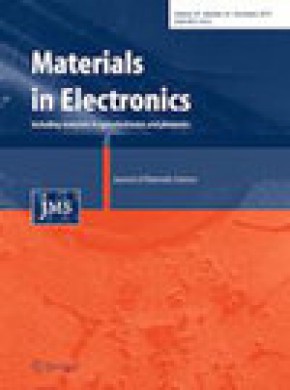
中科院分區(qū) 4區(qū)
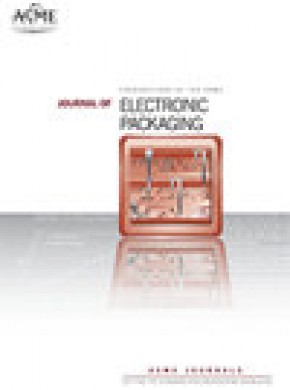
中科院分區(qū) 4區(qū)

中科院分區(qū) 4區(qū)
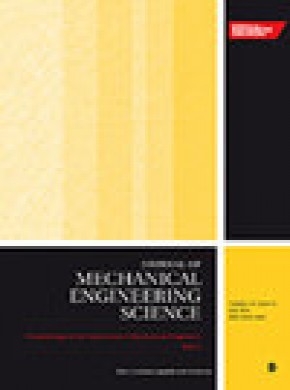
中科院分區(qū) 4區(qū)